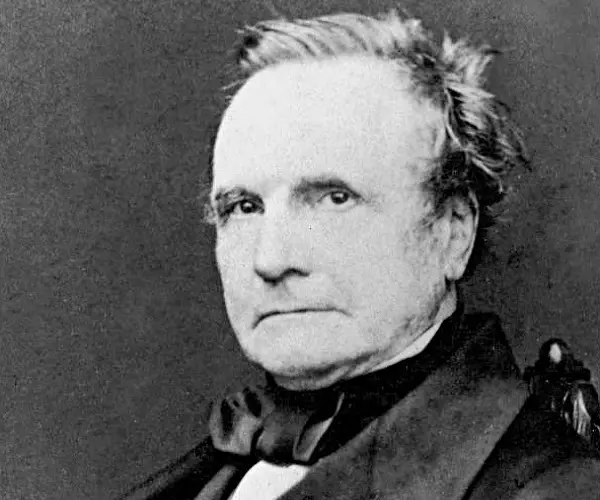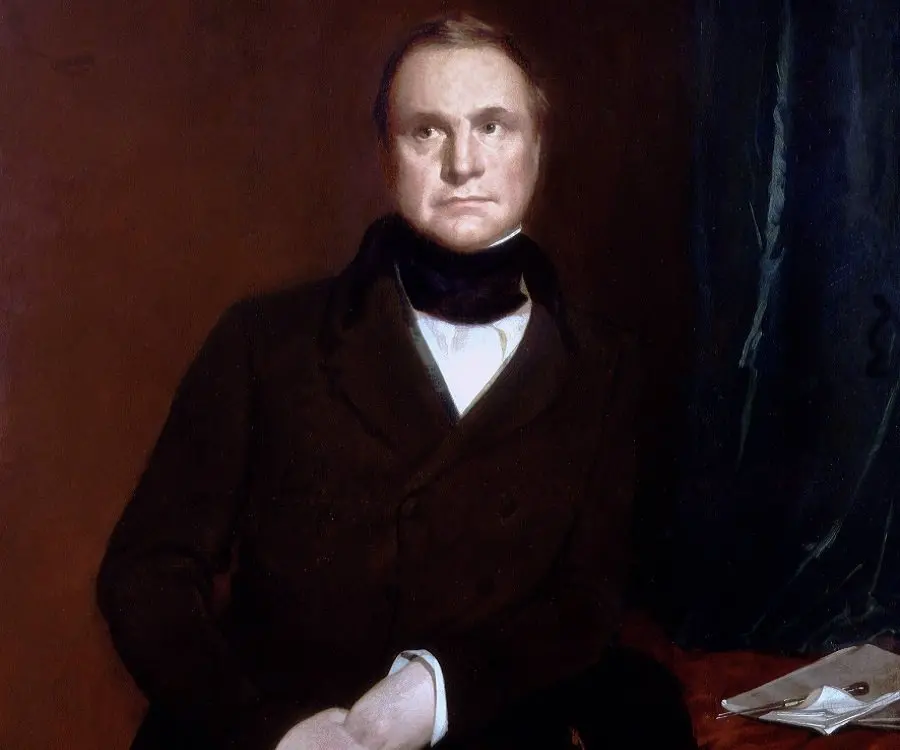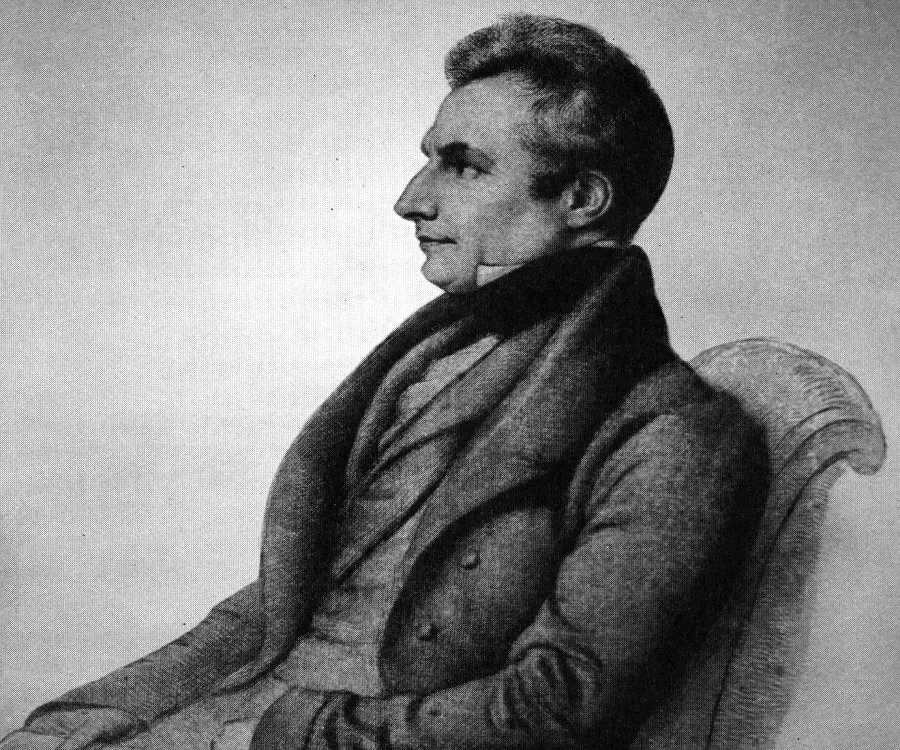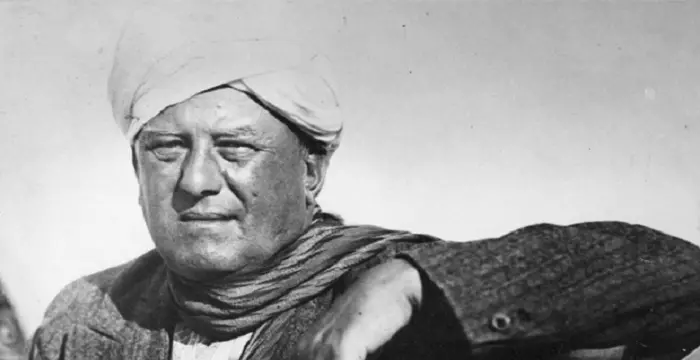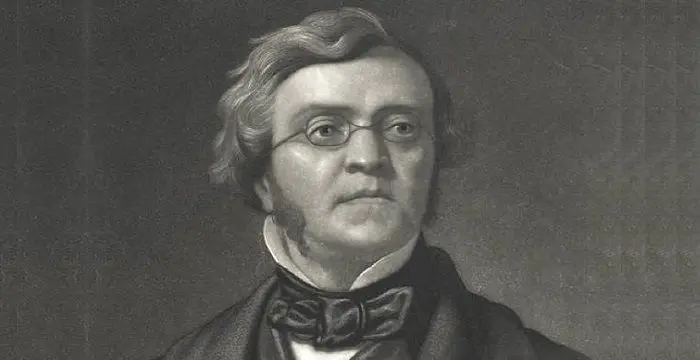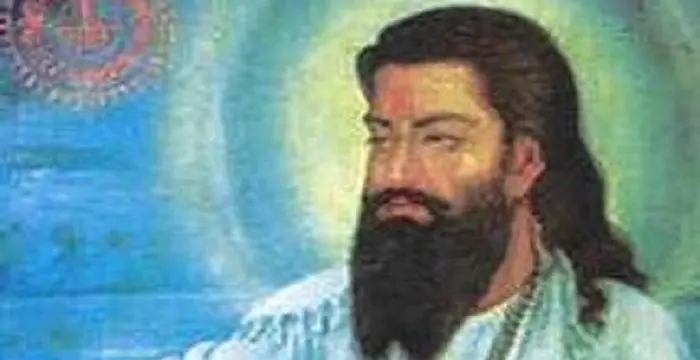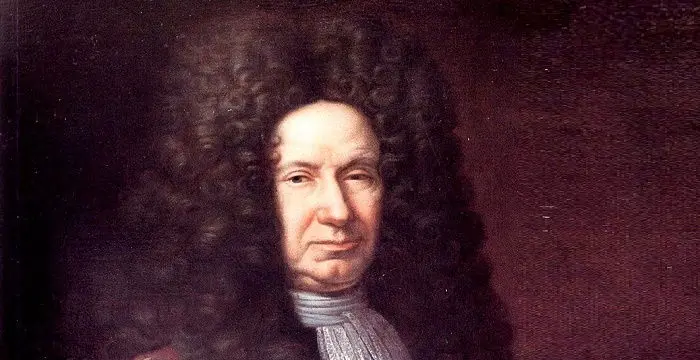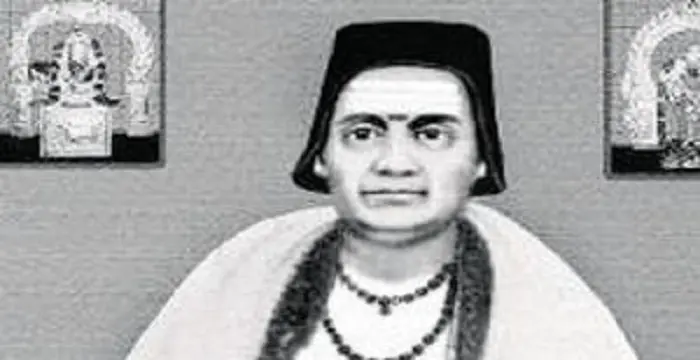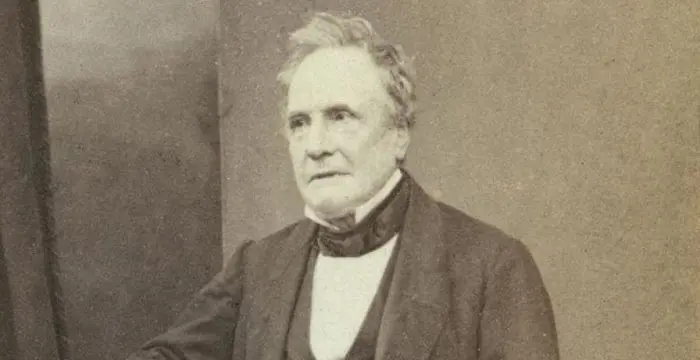
Charles Babbage - Father of the Computer, Birthday and Life
Charles Babbage's Personal Details
Charles Babbage is regarded as the father of modern computers
| Information | Detail |
|---|---|
| Birthday | December 26, 1791 |
| Died on | October 18, 1871 |
| Nationality | British |
| Famous | Trinity College, Cambridge, Scientists, Mathematicians, Father of the Computer |
| Spouses | Georgiana Whitmore |
| Childrens | Benjamin Babbage |
| Universities |
|
| Notable Alumnis |
|
| Discoveries / Inventions |
|
| Birth Place | London |
| Gender | Male |
| Father | Benjamin Babbage |
| Mother | Betsy Plumleigh Babbage |
| Sun Sign | Capricorn |
| Born in | London |
| Famous as | Father of the computer |
| Died at Age | 79 |
Charles Babbage's photo
Who is Charles Babbage?
Charles Babbage, a brilliant polymath, is remembered today as the first man to build a computing machine. He helped found the Astronomical Society and came to be interested in creating a calculating machine. He built a small machine that could compute squares. This helped him acquire funds from the British government for the Difference Engine, but it could not be completed. In his second attempt, he designed a more complicated machine called the Analytical Engine, which was programmed using punched cards. Apart from this computing machine, his brilliant mind achieved more. His study of electrodynamics was referred to by Michael Faraday. He designed an open submarine in which four people could survive for a couple of days. He could decode the Vigenère's auto key cipher, but was forced to keep his achievement under wraps due to the Crimean War. He invented the pilot fixed to locomotives to clear the tracks, and the dynamometer which kept track of the locomotive's progress. He was a Lucasian Professor of Mathematics at Cambridge for over a decade. He was one of the first to write about operational research. The ‘Babbage Principle’ developed the division of labor according to the skill of the laborer. His views on Creation supported natural law, and distanced the scriptures from it.
// Famous Trinity College, Cambridge
Isaac Newton
Isaac Newton was an English scientist and mathematician, who discovered gravitation and Newtonian Mechanics. Read this biography to find more on his life.
Aleister Crowley
Aleister Crowley was an occultist and ceremonial magician who founded the ethical philosophy of Thelema. This biography of Aleister Crowley provides detailed information about his childhood, life, achievements, works & timeline.
William Makepeace Thackeray
William Thackeray was an English novelist and satirist. Read this brief biography to find more on his life & timeline.
Childhood & Early Life
Charles was one of the four children born to Benjamin Babbage, a banking partner in Praed's & Co and the owner of the Bitton Estate in Teignmouth, and Betsy Plumleigh Babbage.
At eight, he was sent to a country school in Alpington in order to recover from a life-threatening fever.
He joined King Edward VI Grammar School in South Devon, and then Holmwood academy, in Middlesex, under the Reverend Stephen Freeman. The school library inspired love for mathematics in him.
He left the academy to be taught by two private tutors - a clergyman from Cambridge from whom he did not learn much, and the other an Oxford tutor who taught him the Classics.
He joined the Trinity College, Cambridge, in 1810. He and his friends formed the Analytical Society, the Ghost Club that investigated paranormal occurrences, and the Extractors Club to free members of mental asylums.
In 1812, he shifted to Peterhouse, Cambridge and as the best mathematician there, he received a degree without examination, two years later. He had defended a controversial thesis in a debate.
Career
Following his graduation from Cambridge, Babbage applied for numerous posts, but found little success. He lectured on astronomy at the Royal Institution and in 1816, was elected a Fellow of the Royal Society.
In 1820, he helped establish the Astronomical Society, which asked Babbage and Herschel to improve The Nautical Almanac by removing the errors in the tables. This inspired in him, the concept of mechanical computation.
He published "Observations on the Application of Machinery to the Computation of Mathematical Tables" in 1822, in the Astronomical Society and constructed a small machine to compute the table of squares.
In 1823, following the Royal Society’s recommendation, the British government assured to fund the difference engine— an automatic mechanical calculator designed to tabulate polynomial functions. His friend and engineer Marc Brunel recommended Joseph Clement, an artisan, for the construction of the engine.
The difference engine was not completed because of agreements over costs with Clement. A second difference Engine did not receive government funding and was abandoned; however, it was finally constructed between 1989 and 1991 to celebrate the 200th anniversary of Babbage's birth.
He worked with his Cambridge friend and fellow mathematician John Herschel, on Arago’s rotation and the electrodynamics surrounding the phenomenon, in 1825. Their work was used and broadened by Michael Faraday.
In 1826, he bought George Barrett’s actuarial tables. Barrett had died leaving unpublished work. Based on his study of Barrett’s work, Babbage published ‘Comparative View of the Various Institutions for the Assurance of Lives’.
He was denied secretaryship of the Royal Society despite being promised. In 1826, he published his design for an open submarine vessel with adequate air for four persons to last more than two days.
From 1828 to 1839, Babbage was Lucasian Professor of Mathematics at Cambridge, an esteemed academic post, and was voted as Foreign Honorary Member of the American Academy of Arts and Sciences.
He tried to enter Parliament and twice was a candidate from Finsbury borough in the 1830s, but lost narrowly. His political views included broadening political franchise and, separation of state and Church.
In 1830, as a polemicist, he published ‘Reflections on the Decline of Science and some of its Causes’. It led to the formation of the British Association for the Advancement of Science (BAAS).
His, ‘On the Economy of Machinery and Manufactures’, in 1832, is one of the earliest work on operational research. The "Babbage principle" supported division of labor on the degree of skill.
In 1837, he published his Ninth Bridgewater Treatise under the title ‘On the Power, Wisdom and Goodness of God’. He outlined his concept of creation in which natural law dominated.
In cryptology, he was able to decode the Vigenere's autokey cipher during the 1850s at the height of the Crimean War, but his discovery was kept a military secret and not published.
Major Works
Babbage designed a complex machine called the Analytical Engine which could be used for general computation and was programmed by punched cards. The Engine was continuously redesigned and developed from 1833 until his death.
In 1838, he invented the pilot, a metal frame in front of locomotives that clears the tracks of obstacles and designed a dynamometer car that would record the progress of the locomotive.
Personal Life & Legacy
In 1814, Babbage married Georgiana Whitmore. Of the couple’s eight children, only, four namely, Benjamin Herschel, Georgiana Whitmore, Dugald Bromhead and Henry Prevost, survived till adulthood.
He died of renal inadequacy at the age 79, and was buried in London's Kensal Green Cemetery. A green plaque commemorates the 40 years he resided at 1 Dorset Street, Marylebone.
Among the many things named after him, is a crater on the moon and a locomotive, while The Charles Babbage Institute, an information technology center, functions at the University of Minnesota.
Trivia
This polymath’s friend and admirer Ada Lovelace is regarded as the world's first computer programmer because she prepared an algorithm designed to be executed by a machine.
This mathematician was one of the four scientists who independently discovered dendrochronology or the study of tree rings; however, A. E. Douglass is regarded as the father of dendrochronology
// Famous Scientists
Juliane Koepcke
Juliane Koepcke is a German-Peruvian biologist, who was the lone survivor among the 92 passengers and crew of the ill-fated LANSA Flight 508 that crashed in the Peruvian rainforest on 24 December 1971. Know more about her life in this biography.
Henry Cavendish
Henry Cavendish was a theoretical chemist and physicist, renowned for discovery of hydrogen and calculation of the mass of earth. To know more about his childhood, profile, timeline and career read on
Konstantin Tsiolkovsky
Konstantin Tsiolkovsky was a Russian rocket scientist and a pioneer of astronautics. This biography provides detailed information about his childhood, family, personal life, career, achievements, etc.
Charles Babbage biography timelines
- // 26th Dec 1791Charles was one of the four children born to Benjamin Babbage, a banking partner in Praed's & Co and the owner of the Bitton Estate in Teignmouth, and Betsy Plumleigh Babbage.
- // 1810He joined the Trinity College, Cambridge, in 1810. He and his friends formed the Analytical Society, the Ghost Club that investigated paranormal occurrences, and the Extractors Club to free members of mental asylums.
- // 1812In 1812, he shifted to Peterhouse, Cambridge and as the best mathematician there, he received a degree without examination, two years later. He had defended a controversial thesis in a debate.
- // 1814In 1814, Babbage married Georgiana Whitmore. Of the couple’s eight children, only, four namely, Benjamin Herschel, Georgiana Whitmore, Dugald Bromhead and Henry Prevost, survived till adulthood.
- // 1816Following his graduation from Cambridge, Babbage applied for numerous posts, but found little success. He lectured on astronomy at the Royal Institution and in 1816, was elected a Fellow of the Royal Society.
- // 1820In 1820, he helped establish the Astronomical Society, which asked Babbage and Herschel to improve The Nautical Almanac by removing the errors in the tables. This inspired in him, the concept of mechanical computation.
- // 1822He published "Observations on the Application of Machinery to the Computation of Mathematical Tables" in 1822, in the Astronomical Society and constructed a small machine to compute the table of squares.
- // 1823In 1823, following the Royal Society’s recommendation, the British government assured to fund the difference engine— an automatic mechanical calculator designed to tabulate polynomial functions. His friend and engineer Marc Brunel recommended Joseph Clement, an artisan, for the construction of the engine.
- // 1825He worked with his Cambridge friend and fellow mathematician John Herschel, on Arago’s rotation and the electrodynamics surrounding the phenomenon, in 1825. Their work was used and broadened by Michael Faraday.
- // 1826In 1826, he bought George Barrett’s actuarial tables. Barrett had died leaving unpublished work. Based on his study of Barrett’s work, Babbage published ‘Comparative View of the Various Institutions for the Assurance of Lives’.
- // 1826He was denied secretaryship of the Royal Society despite being promised. In 1826, he published his design for an open submarine vessel with adequate air for four persons to last more than two days.
- // 1828 To 1839From 1828 to 1839, Babbage was Lucasian Professor of Mathematics at Cambridge, an esteemed academic post, and was voted as Foreign Honorary Member of the American Academy of Arts and Sciences.
- // 1830In 1830, as a polemicist, he published ‘Reflections on the Decline of Science and some of its Causes’. It led to the formation of the British Association for the Advancement of Science (BAAS).
- // 1832His, ‘On the Economy of Machinery and Manufactures’, in 1832, is one of the earliest work on operational research. The "Babbage principle" supported division of labor on the degree of skill.
- // 1837In 1837, he published his Ninth Bridgewater Treatise under the title ‘On the Power, Wisdom and Goodness of God’. He outlined his concept of creation in which natural law dominated.
- // 1838In 1838, he invented the pilot, a metal frame in front of locomotives that clears the tracks of obstacles and designed a dynamometer car that would record the progress of the locomotive.
- // 18th Oct 1871He died of renal inadequacy at the age 79, and was buried in London's Kensal Green Cemetery. A green plaque commemorates the 40 years he resided at 1 Dorset Street, Marylebone.
// Famous Mathematicians
Grigori Perelman
Grigori Perelman is a Russian mathematician who is best known for his contributions to Riemannian geometry and geometric topology. Check out this biography to know about his childhood, family life, achievements and fun facts about him.
Terence Tao
Terence Tao is an Australian- American mathematician who has contributed enormously to the field of mathematics. Check out this biography to know about his childhood, family life and achievements.
Isaac Newton
Isaac Newton was an English scientist and mathematician, who discovered gravitation and Newtonian Mechanics. Read this biography to find more on his life.
Brahmagupta
Brahmagupta was a highly accomplished ancient Indian astronomer and mathematician. This biography of Brahmagupta provides detailed information about his childhood, life, achievements, works & timeline.
Giovanni Domenico Cassini
Giovanni Cassini was a 17th century Italian mathematician, astronomer and astrologer. This biography of Giovanni Cassini provides detailed information about his childhood, life, achievements, works & timeline.
Bhāskara II
Bhaskara II was a 12th century Indian mathematician. This biography of Bhaskara II provides detailed information about his childhood, life, achievements, works & timeline.
Charles Babbage's FAQ
What is Charles Babbage birthday?
Charles Babbage was born at 1791-12-26
When was Charles Babbage died?
Charles Babbage was died at 1871-10-18
Where was Charles Babbage died?
Charles Babbage was died in Marylebone
Which age was Charles Babbage died?
Charles Babbage was died at age 79
Where is Charles Babbage's birth place?
Charles Babbage was born in London
What is Charles Babbage nationalities?
Charles Babbage's nationalities is British
Who is Charles Babbage spouses?
Charles Babbage's spouses is Georgiana Whitmore
Who is Charles Babbage childrens?
Charles Babbage's childrens is Benjamin Babbage
What was Charles Babbage universities?
Charles Babbage studied at Trinity College, Cambridge, Trinity College, Cambridge, Peterhouse, Cambridge, University of Cambridge
What was Charles Babbage notable alumnis?
Charles Babbage's notable alumnis is Trinity College, Cambridge
What is Charles Babbage's inventions/discoveries?
Analytical Engine was invented (or discovered) by Charles Babbage
Who is Charles Babbage's father?
Charles Babbage's father is Benjamin Babbage
Who is Charles Babbage's mother?
Charles Babbage's mother is Betsy Plumleigh Babbage
What is Charles Babbage's sun sign?
Charles Babbage is Capricorn
How famous is Charles Babbage?
Charles Babbage is famouse as Father of the computer
